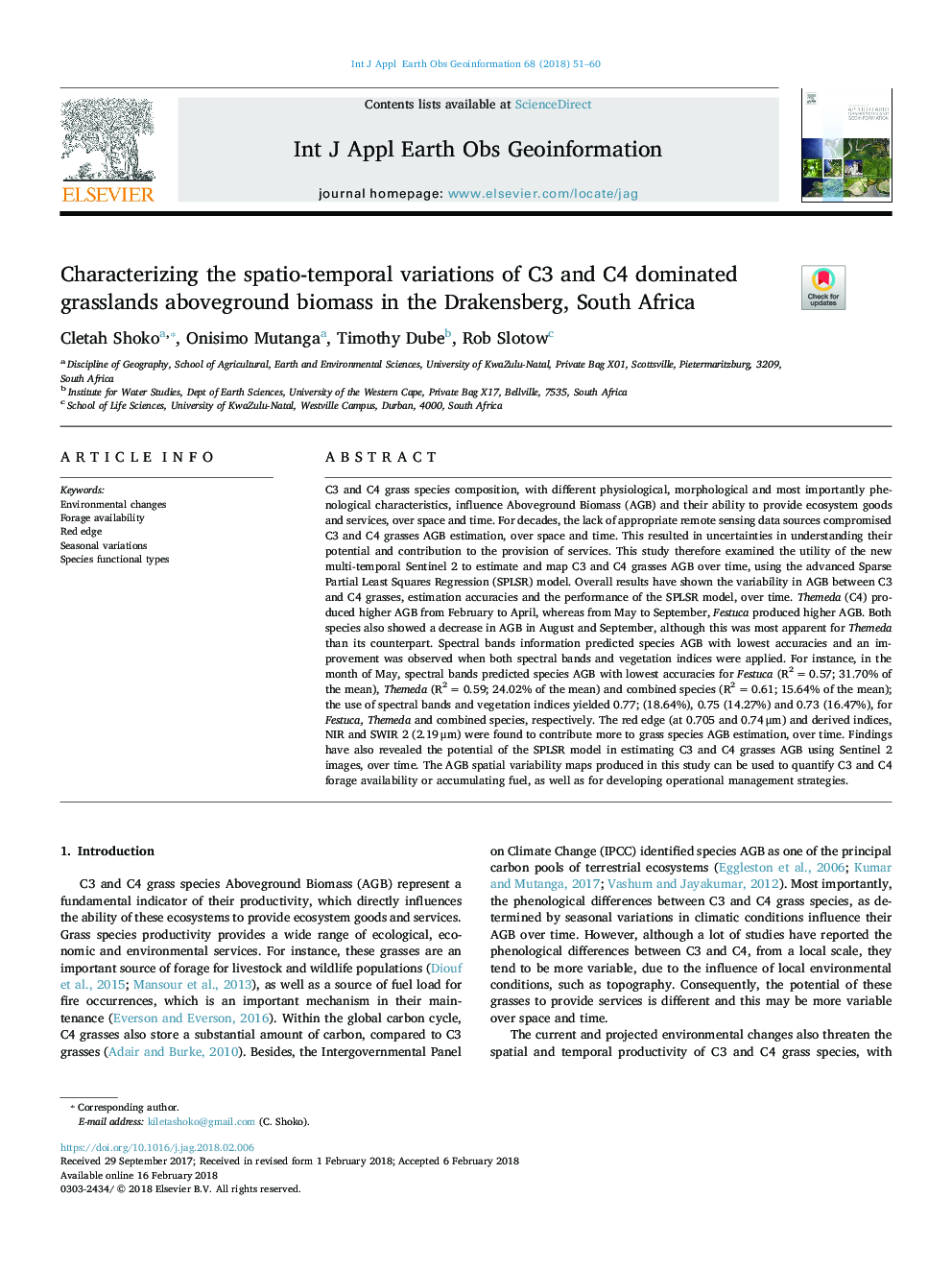| کد مقاله | کد نشریه | سال انتشار | مقاله انگلیسی | نسخه تمام متن |
|---|---|---|---|---|
| 8867905 | 1621789 | 2018 | 10 صفحه PDF | دانلود رایگان |
عنوان انگلیسی مقاله ISI
Characterizing the spatio-temporal variations of C3 and C4 dominated grasslands aboveground biomass in the Drakensberg, South Africa
دانلود مقاله + سفارش ترجمه
دانلود مقاله ISI انگلیسی
رایگان برای ایرانیان
کلمات کلیدی
موضوعات مرتبط
مهندسی و علوم پایه
علوم زمین و سیارات
کامپیوتر در علوم زمین
پیش نمایش صفحه اول مقاله

چکیده انگلیسی
C3 and C4 grass species composition, with different physiological, morphological and most importantly phenological characteristics, influence Aboveground Biomass (AGB) and their ability to provide ecosystem goods and services, over space and time. For decades, the lack of appropriate remote sensing data sources compromised C3 and C4 grasses AGB estimation, over space and time. This resulted in uncertainties in understanding their potential and contribution to the provision of services. This study therefore examined the utility of the new multi-temporal Sentinel 2 to estimate and map C3 and C4 grasses AGB over time, using the advanced Sparse Partial Least Squares Regression (SPLSR) model. Overall results have shown the variability in AGB between C3 and C4 grasses, estimation accuracies and the performance of the SPLSR model, over time. Themeda (C4) produced higher AGB from February to April, whereas from May to September, Festuca produced higher AGB. Both species also showed a decrease in AGB in August and September, although this was most apparent for Themeda than its counterpart. Spectral bands information predicted species AGB with lowest accuracies and an improvement was observed when both spectral bands and vegetation indices were applied. For instance, in the month of May, spectral bands predicted species AGB with lowest accuracies for Festuca (R2â¯=â¯0.57; 31.70% of the mean), Themeda (R2â¯=â¯0.59; 24.02% of the mean) and combined species (R2â¯=â¯0.61; 15.64% of the mean); the use of spectral bands and vegetation indices yielded 0.77; (18.64%), 0.75 (14.27%) and 0.73 (16.47%), for Festuca, Themeda and combined species, respectively. The red edge (at 0.705 and 0.74â¯Î¼m) and derived indices, NIR and SWIR 2 (2.19â¯Î¼m) were found to contribute more to grass species AGB estimation, over time. Findings have also revealed the potential of the SPLSR model in estimating C3 and C4 grasses AGB using Sentinel 2 images, over time. The AGB spatial variability maps produced in this study can be used to quantify C3 and C4 forage availability or accumulating fuel, as well as for developing operational management strategies.
ناشر
Database: Elsevier - ScienceDirect (ساینس دایرکت)
Journal: International Journal of Applied Earth Observation and Geoinformation - Volume 68, June 2018, Pages 51-60
Journal: International Journal of Applied Earth Observation and Geoinformation - Volume 68, June 2018, Pages 51-60
نویسندگان
Cletah Shoko, Onisimo Mutanga, Timothy Dube, Rob Slotow,